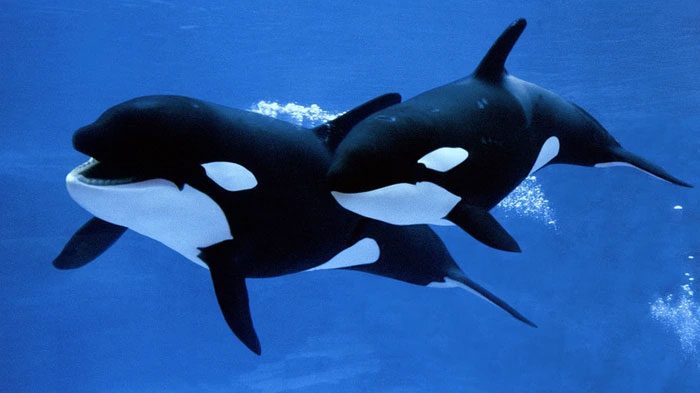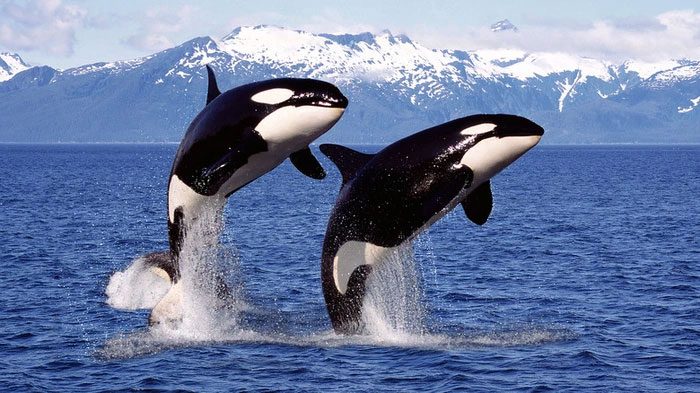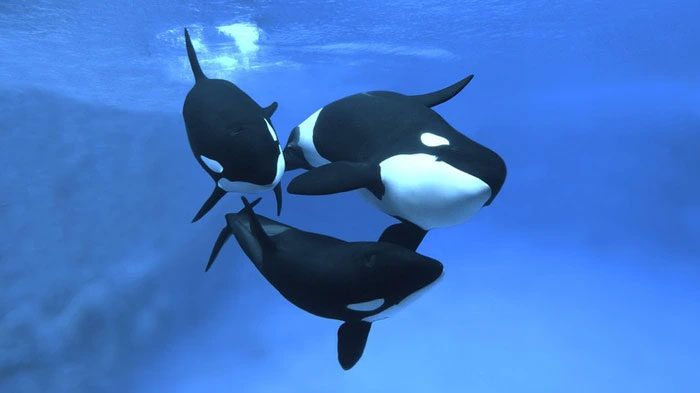According to scientists, if a female orca gives birth to a male, it is likely to be the last time she will have offspring.
A study from the Center for Whale Research (CWR) in Harbor, Washington, USA, published in the journal Current Biology, indicates that adult male orcas living along the Pacific coast of North America are particularly close to their mothers.
The study found that a portion of orcas, which do not migrate and live year-round off the Northwest Pacific coast of North America, often show special preferential treatment toward their sons, even after they have matured. The CWR’s research shows that similar behaviors are not exhibited toward the daughters of these female orcas.
However, what has been observed is not merely parental favoritism. According to the center’s findings, there appears to be a certain evolutionary advantage for female orcas to invest additional care in their sons. CWR’s research director, Michael Weiss, noted: “For over a decade, we have known that adult male orcas still rely on their mothers for survival“.

Orcas also exhibit very high social behavior, living in matriarchal societies. The basic social unit of orcas typically consists of 5 to 6 members from the same family, or closely related individuals forming a community, with groups sharing common ancestry forming clans. The relationships among orca family members are incredibly close and rival those of human societies.
Non-migratory orcas in the Northwest Pacific typically feed on Chinook salmon, and what CWR researchers discovered is that mother orcas only consume half of the fish they catch.
Meanwhile, their sons tend to follow behind their mothers to consume the remaining portion. This study was conducted over multiple generations of orcas in the Northwest Pacific and requires further research to determine if these behaviors occur in other orca populations.
According to CWR’s research director, Michael Weiss, this is the first indication that a species is making long-term investments in the health and well-being of their offspring. Weiss added: “Our previous research has indicated that in orca populations, males have a higher chance of survival if their mothers are present.”
Researchers want to explore whether this additional support comes at any cost, and the answer is indeed yes. Weiss stated: “Mother orcas pay a steep price in their future reproductive capacity to ensure their sons survive.”

Despite living in a matriarchal system, adult male orcas can remain with their pods, temporarily joining other pods for mating before returning to their own. In contrast, female orcas can separate upon maturity to form new pods of their own.
The conclusion of CWR’s research is that there is a trade-off for mother orcas when they give birth to males—they will not be able to reproduce again. This is believed to be because mother orcas do not consume enough nutrients to successfully reproduce; they share half of what they catch with their mature sons.
However, what mother orcas achieve by doing this is the potential for their sons to become dominant breeding males within the population.
Evidence suggests that the arrangement between adult male orcas and their mothers is consensual; in some orca populations, grandmothers play a significant role in the social structure. In this regard, Professor Darren Croft from the University of Exeter, who participated in the research, stated: “If a mother orca can raise her son to be a large male in the population, then the young in neighboring pods will later be his descendants.”

Lead females are often older orcas, as they possess experience and knowledge accumulated by their families over generations. Older female orcas can guide younger orcas in foraging for food and teach younger females how to fulfill maternal responsibilities. Some data suggests that groups of orcas led by older females are less likely to abandon their partners when hunting fails. During times of food scarcity, they will share food with family members and collectively bear the burden of survival.
|
A study conducted in 2004 demonstrated that the brain structure of orcas is remarkably similar to that of humans—not only do they have highly folded cortices, but also brain regions analogous to humans, including well-developed areas crucial for cognitive and emotional control. Furthermore, the close relationship of these animals with humans even makes one forget their “aggressive underwater” image. In the wild, there has never been a recorded instance of orcas attacking humans; they even help those who fall into the water. Even when fishing boats hunt young orcas, mother orcas only vocalize without retaliating. |





















































